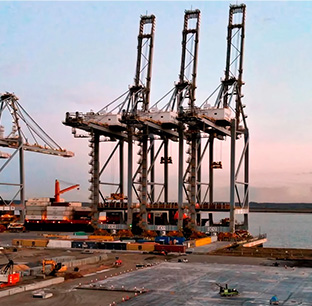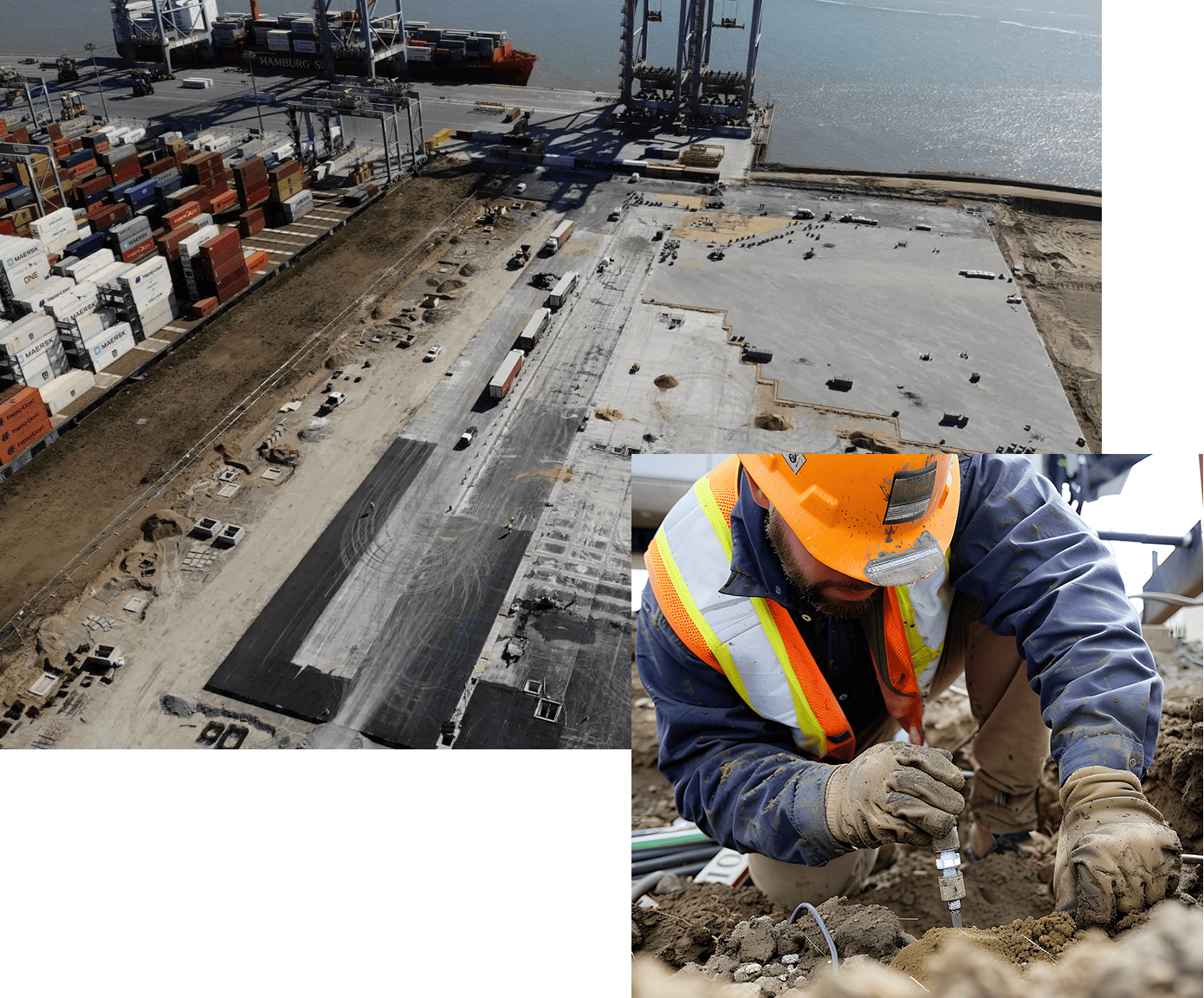Challenge
DP World’s London Gateway is a modern deep-sea port and logistics park located 25 miles east of central London, on the north side of the Thames Estuary. The project involved building a new empty container yard (MT Park) covering 15 acres, with a heavy-duty pavement system. This development aimed to provide six hectares for empty container stacking, involving 80,000 m³ of bulk excavation and creating durable pavement surfaces. One of the main challenges was the tight project timeline. Our design team had to work closely with the principal contractor (Charles Brand), client (DP World), and client’s engineers to prioritize critical design elements and ensure timely approvals, allowing construction deadlines to be met successfully.
Our work
Ayesa was the lead designer for civil engineering company Charles Brand. Our team of geotechnical and engineering experts designed the landside infrastructure at the terminal. This included pavement and drainage design, foundation design for lighting and CCTV towers, and providing consultancy services like settlement analysis and value engineering support during construction. Construction started on this exciting project in October 2019. We specified and verified ground improvement using High Energy Impact Compaction (HEIC) before pavement construction to address significant deposits of dredged infill with soft and highly compressible near-surface soils.
Added value
Given the high pavement loads, we determined that a thick layer of Cement Bound Granular Material (CBGM) was necessary. We placed the CBGM in two layers and conducted extensive trials to ensure its performance. This approach allowed us to use the CBGM pavement solution, saving significant costs and time compared to a traditional concrete slab solution. By integrating a rigorous testing and verification strategy, we ensured the monolithic performance of the CBGM layer. This approach provided significant savings in both cost and program duration over an alternative concrete slab solution.







